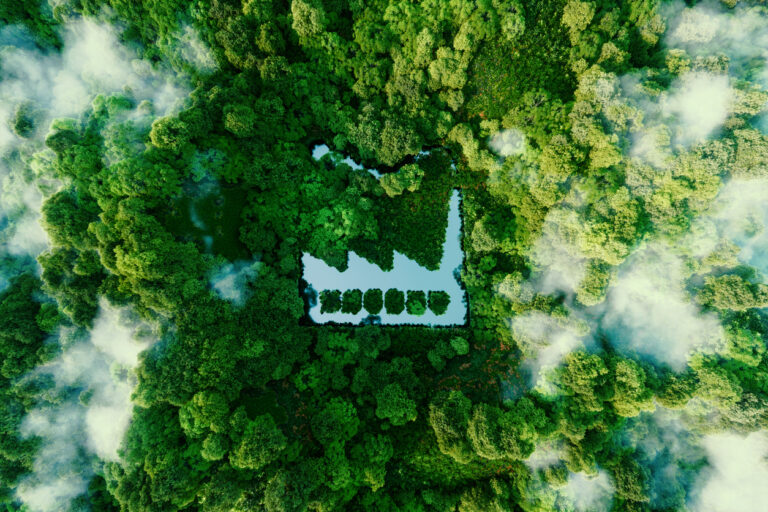The Neighbourhood, Development and International Cooperation Instrument (NDICI) represents a fundamental reform for the European Union (EU)’s development policy, its neighbourhood policy and its external action more broadly. The new instrument, with a total budget of €79.5 billion for the next seven years, will integrate previously self-standing external funding instruments. It covers several policy areas and comes with new jargon and framing, such as ‘projecting European values’ or ‘putting Europe on the geopolitical map’. The new instrument will be implemented in a rapidly changing geopolitical context and will have to respond to unprecedented challenges caused by the COVID-19 pandemic.
Last December, the European Think Tanks Group (ETTG) organised a webinar on programming the NDICI. The panel featured representatives of the European Commission (Felix Fernandez-Shaw of DG INTPA), civil society organisations (Celia Cranfield from CONCORD and Carine Nsoudou from ADEPT) and think tanks (Niels Keijzer from DIE and Alexei Jones from ECDPM – co-authors of this blog).
The webinar aimed to facilitate an open exchange on the NDICI’s main novelties and the changes these imply in the EU’s approach to development and international cooperation. The so-called programming of the NDICI, referring to the process of determining the EU’s cooperation priorities and financial allocations for the period 2021-2027, is indeed subject to new approaches and ambitions. Regional and thematic programmes, as well as specific modalities that until recently were programmed and managed separately, will now be programmed under the same rules and processes. These changes in the financial architecture of EU external action are meant to facilitate a more coherent and strategic approach to development cooperation. In this context, it seemed important for us to discuss the prospects for a programming process that remains poverty-focused, country-owned and inclusive.
Below we share five takeaways of the discussion, as well as some reflections on the challenges moving forward.
1: Human development
All agreed that human development should remain high on the EU’s development cooperation agenda. While new EU policy objectives (notably a green transition, digital transformation, sustainable growth and migration partnerships) will feature prominently in EU programming documents, prevailing development objectives will remain a priority for EU cooperation with its partner countries.
The current global health crisis and its socio-economic impact will require increased and sustained support from the EU in the area of human development (notably in education, health, social protection) as well as in addressing inequalities, with special attention to women and children. The 20% spending target for human development was seen as crucial to ensure such sustained funding during the next years.
Panellists pointed that a single instrument to govern the EU’s neighbourhood, international cooperation and development cooperation engagement offers distinct advantages in terms of promoting key thematic priorities as identified in the European Consensus on Development. Yet, the inclusion of grant-based cooperation, blended finance, technical assistance and the external action guarantee also has the unintended effect that the form of cooperation in support of these themes will be prescribed to a large extent. One question was whether the strong focus on investments and private sector involvement was the most appropriate way to support human development. Investment in new technologies and innovative modes of cooperation can also address inequalities.
The challenge will be how to respond to new challenges and needs resulting from the pandemic (such as socio-economic recovery and access to vaccines), while pushing for policy objectives in new areas and without neglecting structural issues.
2: Geographisation
The so-called geographisation approach under the NDICI means that there will be an increased focus on bilateral cooperation with third countries. This focus has raised some concerns due to the associated significant decrease of funding for thematic programmes compared to the previous EU budget. While the bulk of resources are now located in the geographic pillar (representing 75% of the instrument) and will be programmed either at country or regional level according to the subsidiarity principle, cooperation will “land and materialise thematically” according to Felix Fernandez-Shaw. Geographic programmes will thus continue to reflect thematic priorities and may be complemented by thematic programmes at global level. Such thematic programmes appear particularly important to address global challenges like climate and health.
While there is a sound rationale for subsidiarity and enhanced complementarity between geographic and thematic programmes, there was however a strong call for ensuring consistency between both approaches in the programming exercise and for not neglecting larger challenges at global or regional level. The shift towards geographisation is indeed an important move away from the previous decade, when the European Commission invested considerably in directly supporting African regional economic communities with a key focus on furthering regional cooperation and integration. While many of the actions associated with the 2030 Agenda concern challenges that each country faces individually (such as ensuring equitable and quality education), other challenges are by definition shared and can only be effectively addressed through international cooperation.
3: Ownership
There was a shared concern that more interest-driven cooperation approaches might negatively affect country ownership. Dynamics depend on the bargaining power of partners as well as of the EU, which differ from country to country. There is nonetheless a tension between on the one hand, the ‘policy first’ approach and the subsequent more assertive focus on EU strategic priorities, and on the other hand, the respect of country ownership and alignment to country needs which lie at the heart of development effectiveness principles. A key challenge in the upcoming programming exercise will therefore be addressing this trade-off to ensure that cooperation responds to priorities of both the EU and partner countries, and genuinely pursues mutual interests.
Programming the NDICI starts with an analysis of national development needs and priorities of partner countries, and an identification of the EU’s priorities and interests. The focus and modalities of the EU’s cooperation engagement will be determined on that basis. Programming is therefore not only the ‘what’, but also the ‘how’, of cooperation. It was pointed out that the multiple binding spending targets within the NDICI (such as 30% on climate, 20% on human development and 10% on migration) may also negatively affect country ownership, as these limit the scope to address different themes and priorities that do not necessarily fit within these areas.
Decades of research on international cooperation confirm that ownership is key for the sustainability of cooperation results. Because it is linked to the preparatory phase of cooperation, the draft NDICI regulation – perhaps understandably so – applies a more static understanding of ownership, linked to the national development priorities of developing countries or other existing strategy documents. However, ownership is not a static property, but instead has to be consciously nurtured throughout the cooperation cycle. Ownership is both an outcome and a key property of the EU’s development cooperation relationships over time, is shared between all actors concerned, and will therefore develop and evolve over time. This is why the EU should closely monitor and consciously promote it over time.
4: Inclusiveness
Panellists agreed that consultations with stakeholders are more than a box-ticking exercise and should also be used to bring in the wealth of expertise and innovative approaches of civil society and the private sector in many relevant areas of cooperation – including those where the EU itself is on a learning curve.
There is a need for the European Commission and EU delegations to link up and ensure consultations with local stakeholders throughout the NDICI programming and implementation phases. Consultations have taken place at country level, but experience so far has been very mixed. Difficulties observed relate notably to the very tight timeline for consultations in partner countries, as well as to the restrictions posed by the COVID-19 crisis, including understaffed EU delegations and the absence of physical meetings.
While virtual consultations and digital tools can partly address these difficulties, they only go some way to compensating for direct interactions. When internet access and connectivity are not equitably shared, or when some groups cannot express themselves with confidence in the official language, this will be even more so the case. Hence, it will be important to manage expectations and not claim to be able to offer a similar level and quality of consultation as under the previous programming round. Moreover, inclusiveness and dialogue should not stop after cooperation priorities have been identified.
Last but not least, there were open questions on how to promote inclusiveness in terms of cooperation with the private sector and the use of blended finance, which require further consideration.
5: Team Europe
The last takeaway is about the momentum created by the Team Europe approach, which emerged in the context of the EU’s global response to COVID-19 and is now being rolled out as part of the NDICI programming. The design of so-called Team Europe Initiatives, focusing on large-scale and transformative flagship initiatives, aims to give more visibility to European cooperation in partner countries.
Team Europe complements and adds a new dimension to the previously-used concepts of joint programming, joint implementation and ‘working better together’. Team Europe is supposed to galvanise the EU and member states to work better together as a team, in a more flexible and less bureaucratic manner. A key difference is that while joint programming remained more technical and low-profile in orientation, Team Europe is characterised by frequent appearance in the discourse of the Commission’s development policy leadership and also puts a strong focus on strengthening the visibility of the EU’s external action.
Yet, while laudable, the Team Europe approach remains a donor-driven exercise. It will be important that partner countries and local stakeholders, including the private sector and civil society organisations, are brought on board. The risk is that the overall approach and process behind Team Europe further reinforces the more supply-driven tendencies within the NDICI.
Next steps
In December 2020, the European Council and the European Parliament reached a political deal on the NDICI. Once the legal text governing the NDICI is agreed, which is expected shortly, the new instrument will apply retroactively from January 2021. Meanwhile, the programming of the NDICI, notably the identification of priority areas of cooperation and design of Team Europe Initiatives, is currently progressing at full speed.
The above five areas are key points of attention for ensuring development effectiveness. They should be given due consideration in the remaining programming process as well as priority in future monitoring and evaluation processes.
Authors: Alexei Jones, Senior Policy Officer (ECDPM) and Niels Keijzer, Senior Researcher (DIE).
The authors are grateful for the feedback and support provided by Daniele Fattibene, IAI and Nina Thijssen, ECDPM.
Image courtesy of Marco Verch Professional Photographer via Flickr.
The views are those of the authors and not necessarily those of ETTG.



